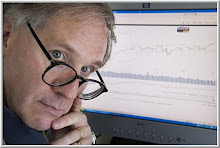
Friday's market gave us an opportunity for an interesting analysis. We've been down two consecutive days, for a total decline of -1.65% on SPY. When we've been down two days in a row for a drop in excess of 1.5%, what happens next?
Since January, 2003 (N = 774), we've had 49 such two-day sequences. The next day, the market is up on average .14% (32 up, 17 down). This is stronger than the average one-day gain of .05% (430 up 344 down) for the sample overall. It thus looks as though a bounce is the normal expectation following two consecutive declines.
When we divide the sample by time, however, a different picture emerges. During 2003 (N = 25), the two-day declines led to a next-day average price change of .38% (18 up, 7 down)--quite strong. In 2004 and 2005, however (N = 24), the average next day change has been -.11% (14 up, 10 down).
If we look three days out, the pattern becomes even more pronounced. During 2003, the average change over the next three days following the two-day drop was .25% (15 up, 10 down). Since 2004, the average three-day change after a two-day drop was .08% (13 up, 11 down)--and in 2005 alone (N = 10), the average three-day change has been -.17% (3 up, 7 down)!
What this is telling us is that early in the bull market, expectations following a two-day drop were quite positive, but these positive expectations have been eroding. At present, based on 2004 and 2005 results, we cannot say that there is a distinctive upside edge following a large two-day decline, and there is even modest evidence of continuation to the downside.
Such sequential analyses of patterns are useful in identifying changing market cycles. This is very important.
Very.




